Jewish weddings blend thousands of years of tradition with personal touches
that make each celebration unique. From the signing of the ketubah to the breaking of the glass, these ceremonies are rich with symbolism and meaning that have stood the test of time.
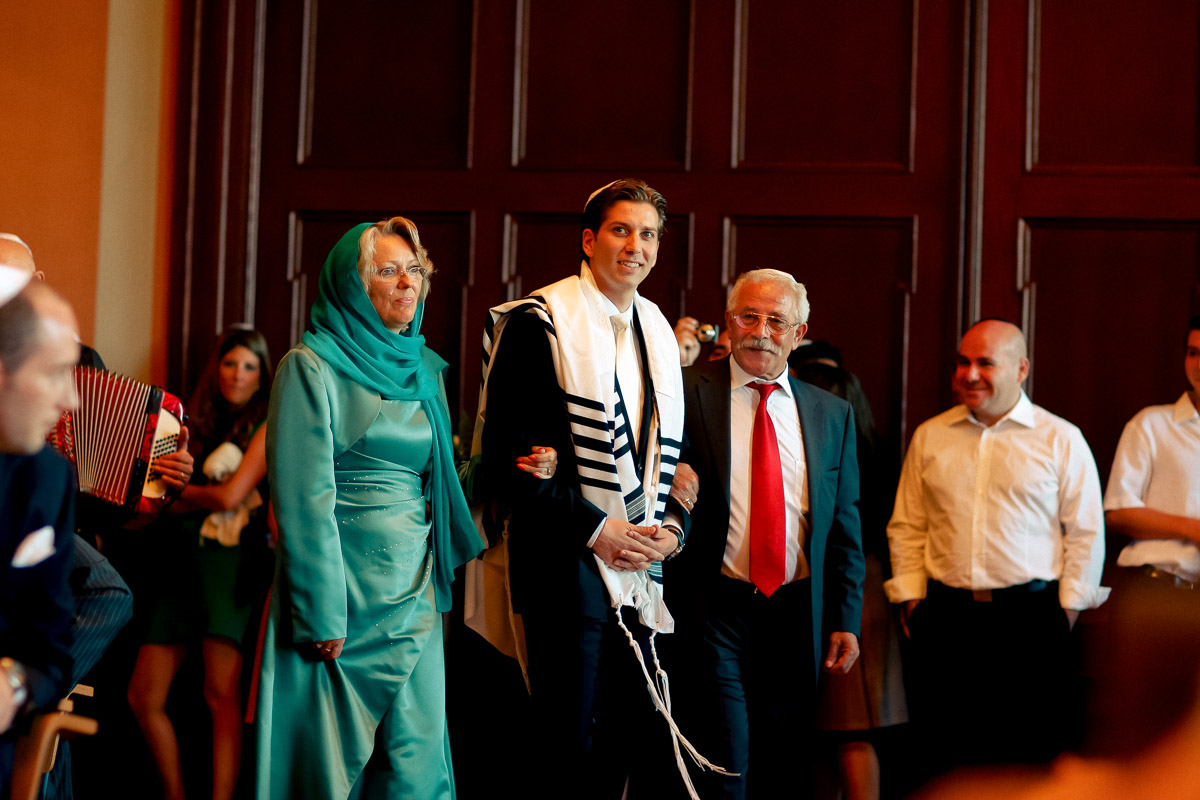
Key Elements of a Traditional Jewish Wedding
Before the Wedding Day
Aufruf: The Sabbath before the wedding, the groom (and in more progressive communities, both partners) is called to the Torah for a blessing, followed by a celebratory reception where guests traditionally throw candy to symbolize the sweetness of the occasion.
Mikveh: The bride traditionally visits the mikveh (ritual bath) before the wedding for spiritual purification. Many modern brides attend with female friends or family members, transforming this into a meaningful pre-wedding ritual.
Kabbalat Panim: Separate receptions for the bride and groom immediately before the ceremony. The bride sits on a throne-like chair while guests offer congratulations, and the groom celebrates with friends and family in another room.
The Ceremony Components
Ketubah Signing: Before the main ceremony, the couple signs the ketubah (marriage contract) in the presence of two witnesses. This ancient document outlines the groom’s responsibilities to the bride and is often beautifully designed as an artistic keepsake.
Bedeken: The veiling ceremony where the groom approaches the bride and lowers the veil over her face. This tradition references the biblical story of Jacob, who was tricked into marrying Leah instead of Rachel.
Chuppah Ceremony: The main ceremony takes place under a chuppah (wedding canopy), symbolizing the couple’s new home together. The chuppah’s open sides represent hospitality to guests.
Hakafot: The bride traditionally circles the groom seven times, symbolizing the creation of a protective space and the seven days of creation. In egalitarian ceremonies, partners might circle each other or alternate circles.
Kiddushin (Betrothal Blessings): The rabbi recites blessings over wine, which the couple shares, followed by the exchange of rings. Traditionally, only the groom gives a ring, but many modern ceremonies include ring exchanges by both partners.
Sheva Brachot (Seven Blessings): Seven blessings celebrating creation, joy, and the couple’s new life together are recited over a second cup of wine.
Breaking the Glass: The ceremony concludes when the groom (or in egalitarian ceremonies, sometimes both partners) breaks a glass wrapped in cloth, symbolizing the destruction of the Temple in Jerusalem and the fragility of relationships.
Yichud: Immediately following the ceremony, the couple retreats to a private room for 15-20 minutes of seclusion, traditionally marking their first moments alone as a married couple.
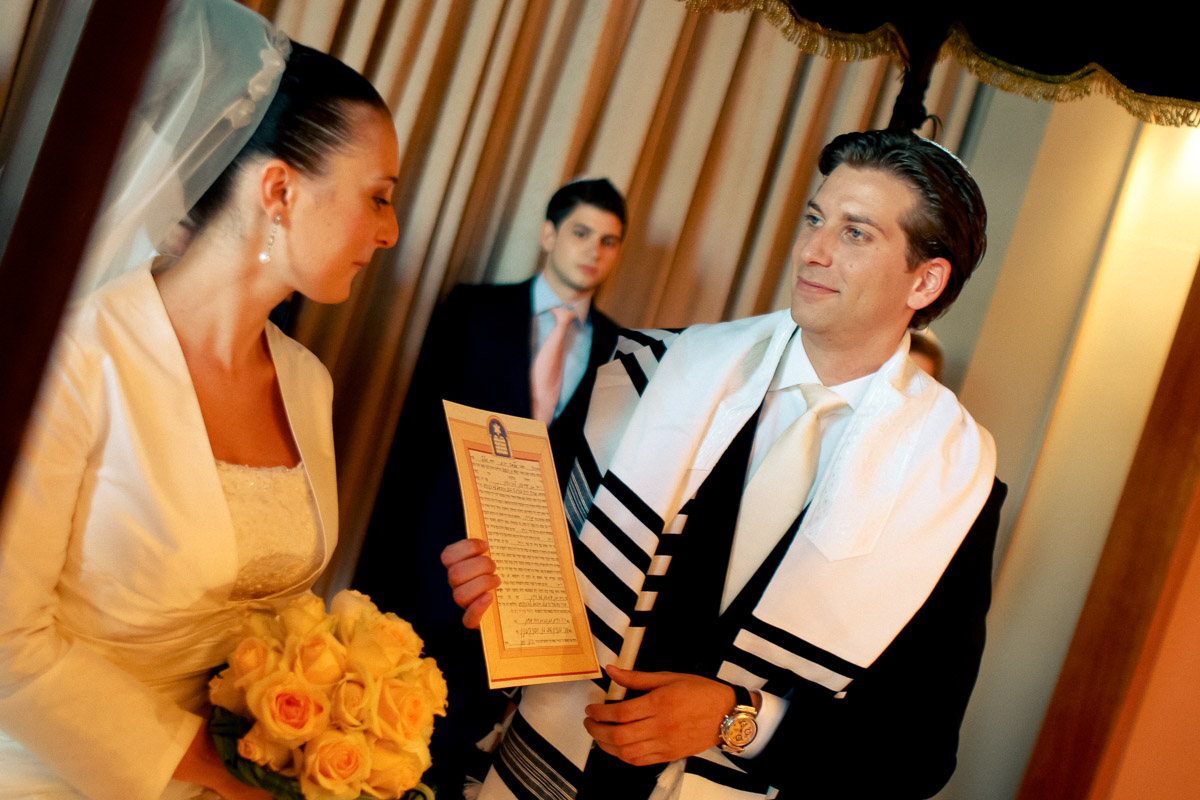
The Ketubah Signing: A Deeper Look
The ketubah (marriage contract) signing is one of the most significant pre-ceremony rituals in a Jewish wedding. Here’s a more detailed exploration of this important tradition:
Historical Significance
The ketubah dates back more than 2,000 years, making it one of Judaism’s oldest wedding traditions. It was revolutionary for its time as it established the bride’s rights within the marriage and the groom’s obligations to her, including financial support during the marriage and in case of divorce or his death.
The Document Itself
The traditional ketubah is written in Aramaic (the common language when this tradition began) and outlines:
- The date and location of the wedding
- Names of the couple and their parents
- The groom’s obligations to provide food, clothing, and conjugal rights
- Financial provisions for the bride in case of divorce or the groom’s death
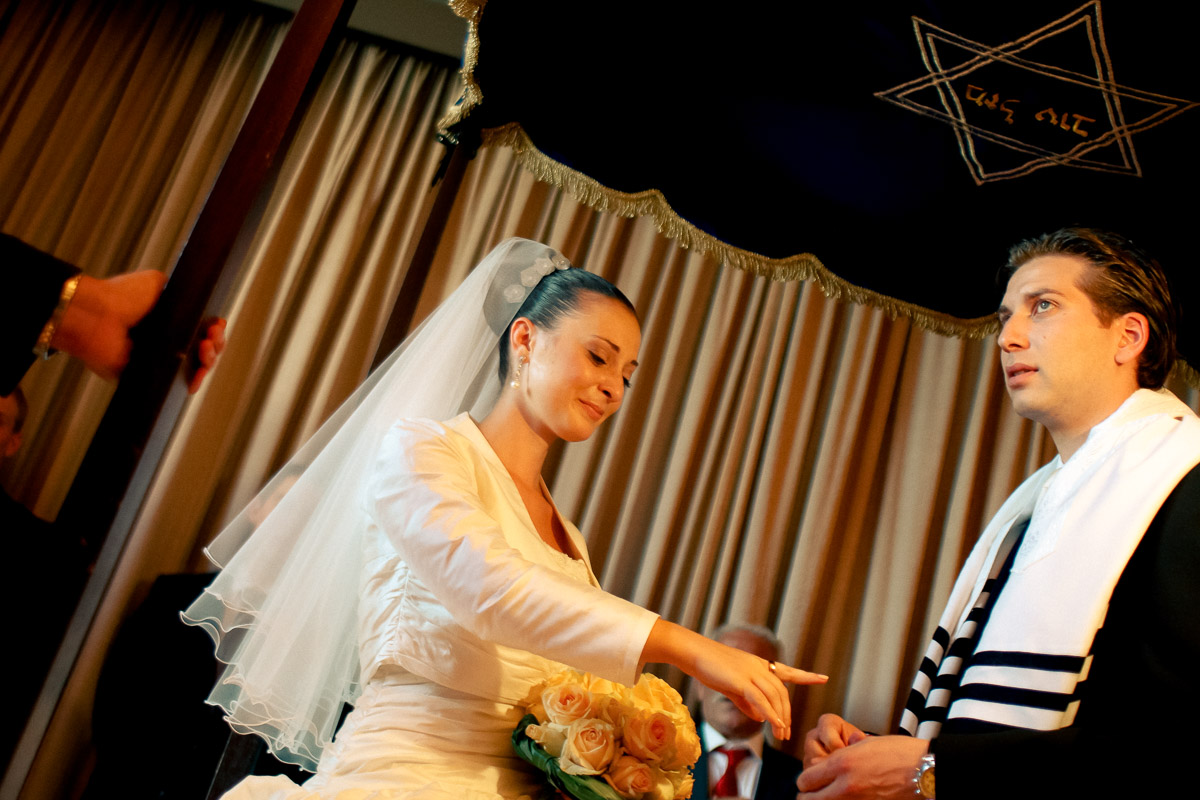
Modern Adaptations
In contemporary Jewish weddings, couples often choose ketubahs that reflect their values:
- Conservative and Reform ketubahs typically include text in both Hebrew/Aramaic and English
- Egalitarian ketubahs emphasize mutual obligations rather than just the groom’s responsibilities
- LGBTQ+ ketubahs adapt traditional language to be inclusive of same-sex unions
- Secular versions may focus on the couple’s commitments to each other without religious language
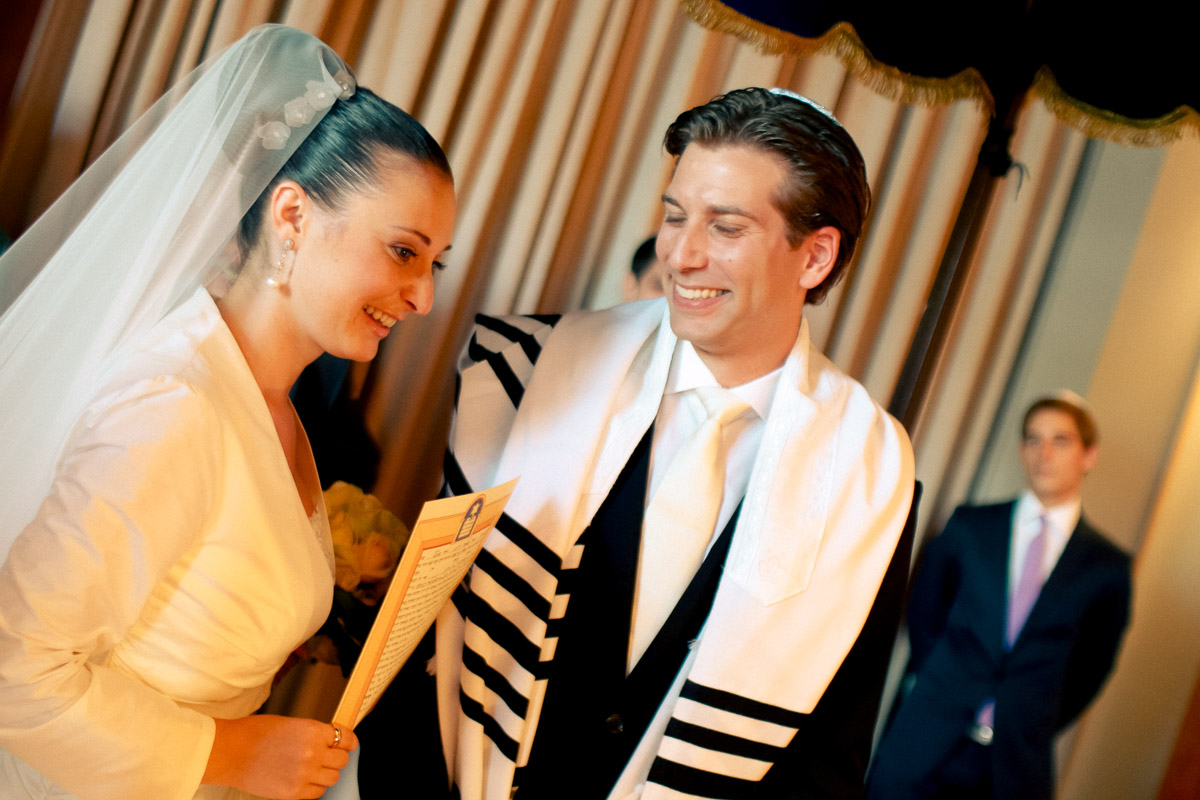
The Signing Ceremony
The ketubah signing usually takes place just before the main ceremony in a private room called the „cheder yichud“ with:
- The couple: In traditional ceremonies, only the groom signs; in progressive ceremonies, both partners sign
- Two witnesses: These must be Jewish adults who are not related to either the couple or each other
- The officiant: Typically a rabbi who guides the process
- Close family members: Often present to witness this intimate moment
The witnesses‘ signatures are actually more legally important in Jewish law than the couple’s signatures, as they testify to the commitment being made.
Ritual Elements
The signing often includes these elements:
- A symbolic acquisition (kinyan) where the groom gives the bride something of value (historically a coin, now often the wedding ring)
- Recitation of blessings
- Sometimes a brief teaching from the rabbi about the significance of the moment
- In many communities, the ketubah is read aloud in both Hebrew/Aramaic and English
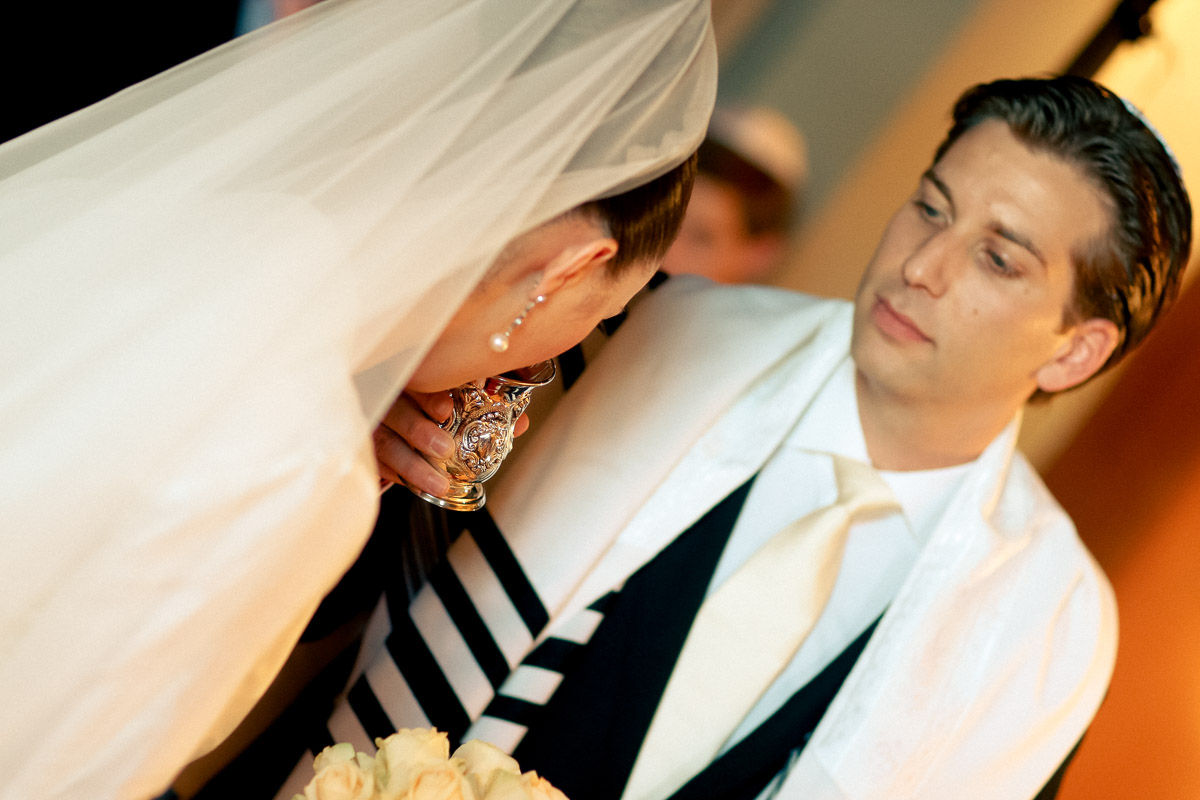
Display During and After the Wedding
After signing, the ketubah is typically:
- Displayed on an easel during the ceremony
- Sometimes read aloud under the chuppah (wedding canopy)
- Presented to the couple following the ceremony
- Framed and displayed in the couple’s home as both a legal document and a work of art
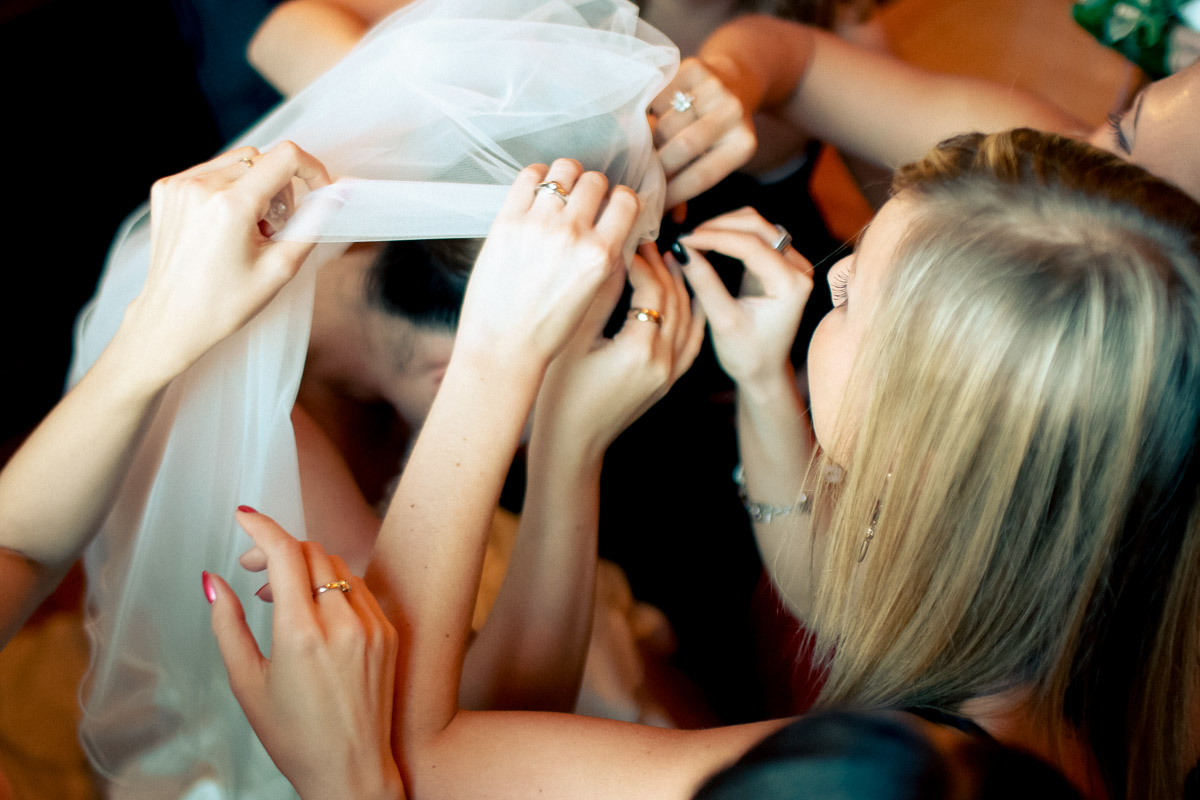
Artistic Significance
Modern ketubahs have evolved into significant art pieces:
- Many couples commission custom designs that reflect their personalities
- Traditional motifs include Jerusalem cityscapes, Tree of Life imagery, and floral designs
- Contemporary artists often blend traditional elements with modern aesthetics
- Prices range from $100 for printed designs to several thousand for one-of-a-kind commissioned artwork
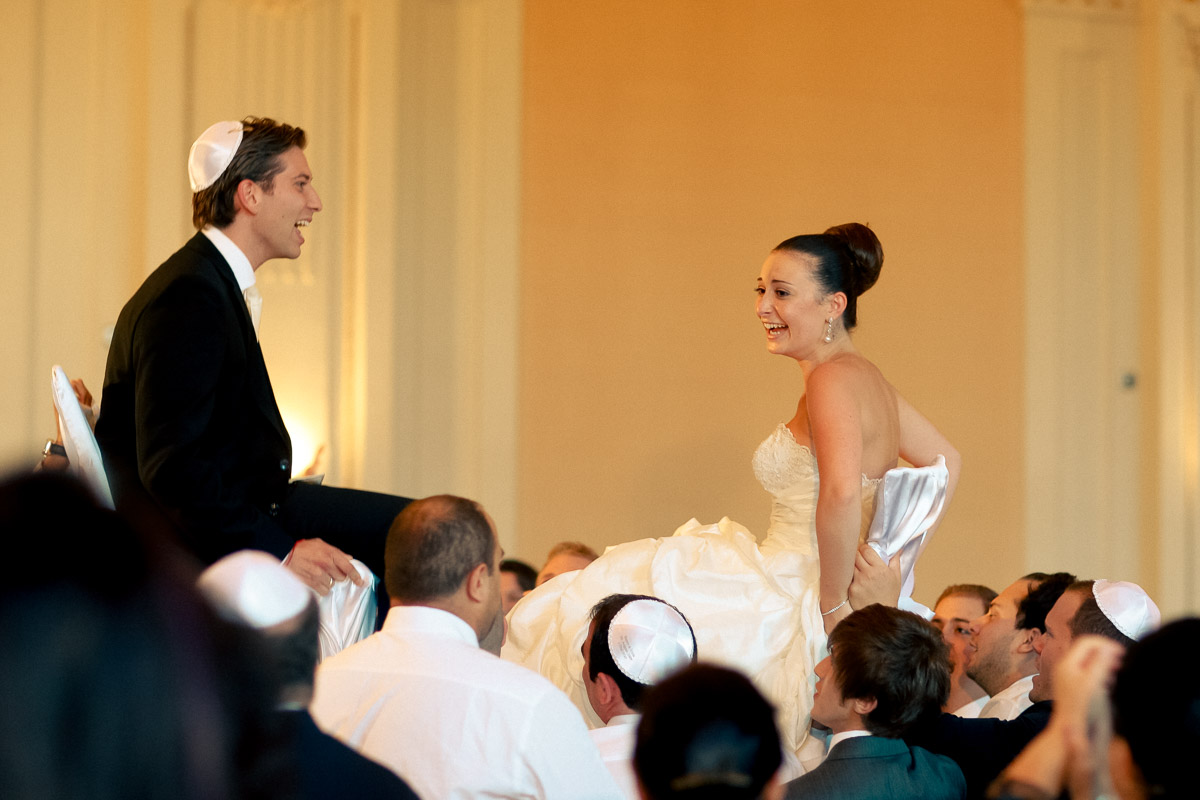
Legal Standing
The ketubah’s legal status varies:
- In Israel, it has legal standing in religious courts
- In most other countries, it functions primarily as a religious document
- Many couples sign both a ketubah and civil marriage documents
The ketubah signing represents the legal aspect of the marriage in Jewish tradition, distinguishing it from the ceremonial aspects that follow under the chuppah. This distinction between legal and spiritual elements makes Jewish weddings unique among many religious traditions.
Planning a Jewish Wedding
Timeline Considerations
Ceremony Length: A traditional Jewish wedding ceremony typically lasts 30-45 minutes, though this can vary based on customs, readings, and music.
Restricted Dates: Jewish weddings are not held on Shabbat (Friday sunset to Saturday sunset), major Jewish holidays, or during the Counting of the Omer (between Passover and Shavuot). Many couples also avoid weddings during the Three Weeks leading to Tisha B’Av, a period of mourning.
Advance Planning: Popular venues and vendors often book 12-18 months in advance, particularly for Sunday weddings (the most popular day for Jewish weddings since they can’t be held on Saturdays until after sundown).
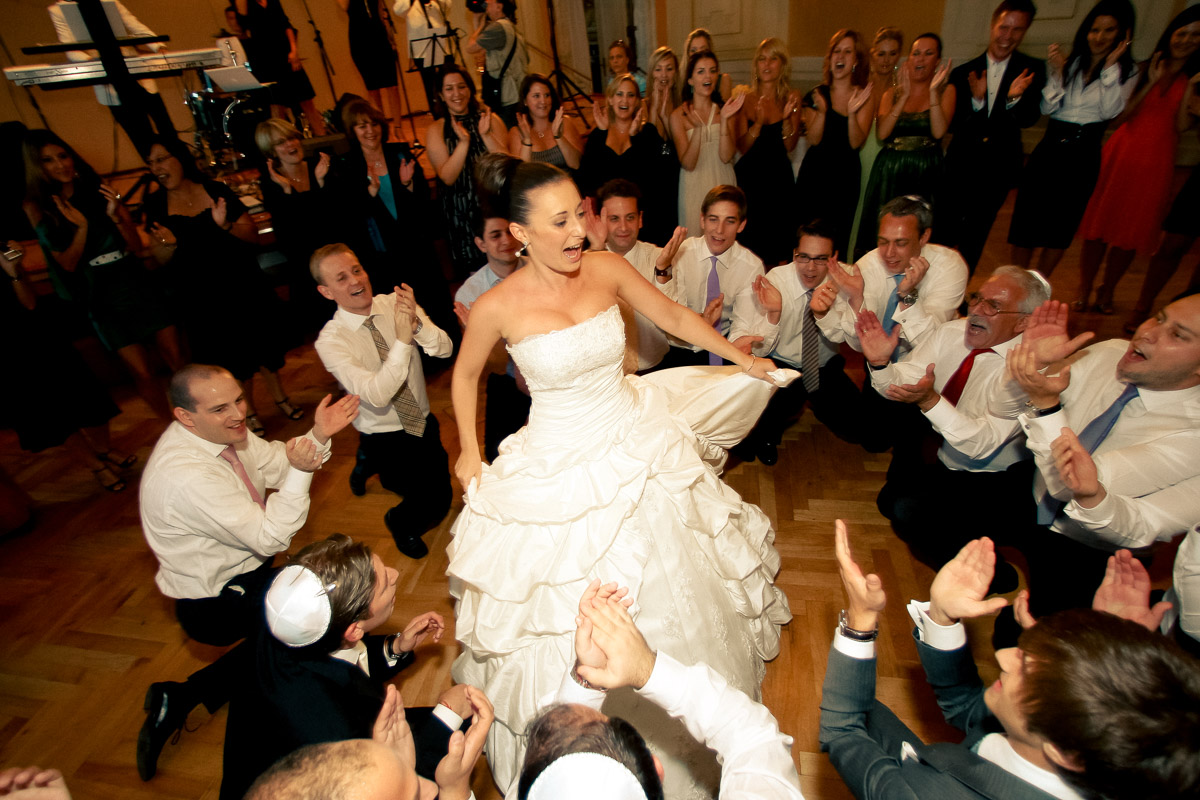
Cost Elements
Venue: The reception location is typically the most significant expense, with kosher venues often commanding premium prices.
Kosher Catering: Maintaining kosher standards requires specialized catering, which can increase food costs by 30-50% compared to non-kosher options.
Rabbi and Cantor: Fees vary widely from $500-$2,000+ depending on location and the spiritual leader’s prominence.
Ketubah: From simple text-only versions ($50-100) to custom artistic creations ($300-1,000+).
Music: Traditional Jewish music often includes a band specializing in both traditional (klezmer) and contemporary music, ranging from $2,500-10,000+.
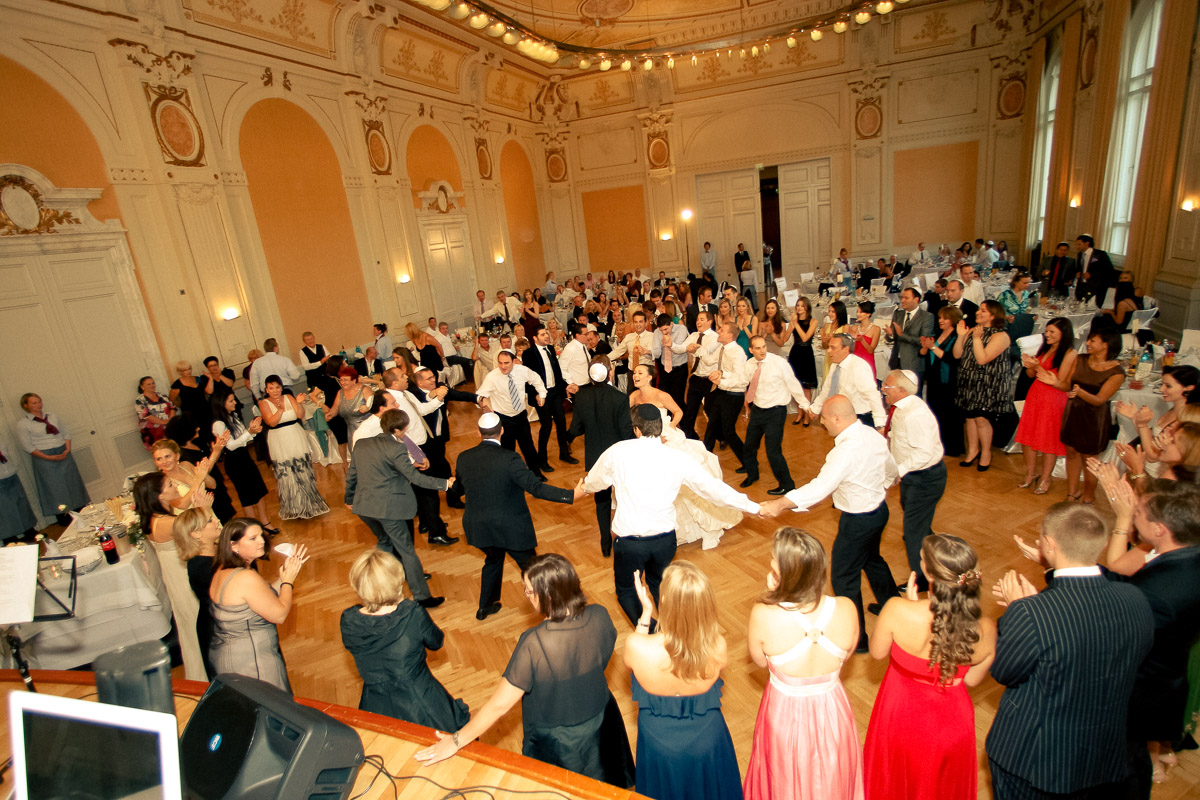
Blending Ancient and Modern Traditions
Traditional Elements in Modern Contexts
Contemporary Jewish weddings often maintain core traditional elements while adapting others to reflect modern values:
Egalitarian Approaches: Many couples now share traditions previously performed by only one gender, such as both circling each other or breaking glasses together.
Personalized Ketubahs: While maintaining required legal text, modern ketubahs often include personalized vows and artistic designs reflecting the couple’s aesthetic.
Inclusive Language: Many couples choose gender-neutral or inclusive language in their ceremony, particularly in Reform, Reconstructionist, and Conservative communities.
LGBTQ+ Adaptations: Jewish denominations that perform same-sex weddings have developed ceremonies that honor tradition while creating space for couples of all gender identities.
The Wedding Reception
The celebration continues with a festive meal and dancing, including:
Seudat Mitzvah: The celebratory meal, often beginning with the blessing over challah bread.
Hora: Perhaps the most recognizable Jewish wedding tradition, this energetic circle dance features the newlyweds being lifted on chairs while guests dance around them.
Mezinke Tanz: A special dance honoring parents who have married off their last child.
Finding Meaning in Tradition
What makes Jewish weddings particularly special is how they connect couples to thousands of years of tradition while allowing for personal expression. Whether strictly Orthodox or progressively modern, these ceremonies create a sacred space where past and present meet, and where two families unite in celebration.
For couples planning a Jewish wedding, consider which elements speak most deeply to your values and relationship, then work with your rabbi to create a ceremony that honors both tradition and your unique love story.
Your dream day deserves the best wedding photographer. Let us capture the beauty of your Jewish wedding!
Do you dream of a wedding as unique as your love? With my experience from numerous Jewish weddings, I understand the subtle differences and special features of each celebration. I know exactly when and where the most important moments take place and specialize in capturing them in authentic and vibrant images.
Are you looking for a photographer who can capture the unique traditions and rituals of your Jewish wedding with sensitivity and experience? Let’s plan your big day together!
Feel free to contact me for a personal consultation – I look forward to telling your story with my camera!
You can book a videographer for your Jewish wedding directly
What my couples say about me
Gepostet aufTrustindex überprüft, ob die Originalquelle der Bewertung Google ist. Für unsere Hochzeit in Düsseldorf sind wir über Empfehlungen auf Ilya, den Fotografen, gestoßen. Ilya war uns gleich sehr sympathisch. Schon bei unserer Kennenlern-Termin hat uns seine langjährige Erfahrung beeindruckt. Professionell und präzise hat er uns gut umsetzbare Anleitung gegeben und mit seinen Fähigkeiten traumhafte Bilder von uns gemacht. Da er sich in Düsseldorf gut auskennt, hat er das ein oder andere zum Ablauf der Hochzeit beigetragen. Er hat zwei traumhafte Locations vorgeschlagen und auch dort die perfekten Fotos gemacht. Wir haben uns sehr wohl mit Ilya gefühlt und fanden es auch sehr gut, dass er unsere Kinder immer mit einbezogen hat! Dadurch konnten wir den Tag noch mehr genießen und haben wunderschöne Bilder zur Erinnerung an einen außergewöhnlichen Tag.Gepostet aufTrustindex überprüft, ob die Originalquelle der Bewertung Google ist. Einen guten Fotografen für die Hochzeit zu finden, ist eine der wichtigsten Aufgaben bei den Vorbereitungen! Mit Ilya haben wir genau die richtige Entscheidung getroffen und haben jetzt wunderschöne Bilder, die uns auch nach vielen Jahren eine tolle Erinnerung an den schönsten Tag sein werden. Sehr professionell und auch auf eine gute Weise ehrlich, was bei vielen Fotografen nicht der Fall ist. Ilya hat uns immer direkt gesagt, was sehr gut und was weniger gut auf dem Bild aussehen würde. Das Ergebnis hat sich dann sehen lassen. Er hat auch immer an jede Kleinigkeit gedacht und auch unsere Wünsche perfekt umgesetzt. Wir würden Ilya auf jeden Fall weiter empfehlen! Georg und IrinaGepostet aufTrustindex überprüft, ob die Originalquelle der Bewertung Google ist. Im Mai ist aus unserer Paar offiziell eine Familie geworden! Zwar lang vorher geplant, trotzdem ist der kleine Feier fast spontan entstanden. Und Dank Ilya haben wir die beste Erinnerungen von diesem Tag nun in den Händen. Es war alles perfekt! Wir haben relativ kurzfristig uns für Fotograf entschieden und Ilya hat direkt uns zugesagt. Kommunikation, Kompetenz - war alles perfekt. Danke auch für die Tipps für den Tag! Die Fotos sind echt toll geworden! Auch unsere individuelle Wünsche wurden berücksichtigt. Auch keine von unseren Gästen wurde benachteiligt. Danke sehr für die Flexibilität was die Zeitplanung angeht. Umd natürlich waren wir so glücklich, dass die Fotos so schnell fertig waren! Unsere Gäste haben auch Zugang zu den Bildern bekommen und waren begeistert! Wir freuen uns, dass Ilya uns an dem Tag unserer Trauung begleitet hat! Und bedanken uns herzlich für die schönsten Fotos, die zeigen wie glücklich wir sind! Dir Fotos zeigen wie die Geschichte unserer Familie nun auch offiziell angefangen hat. Danke sehr dafür.Gepostet aufTrustindex überprüft, ob die Originalquelle der Bewertung Google ist. Ilya und sein Team sind einfach der Hammer!!! Extrem professionelle Arbeit und das Ergebnis ist mehr wie genial. Wir danken euch dass ihr unseren Tag noch unvergesslicher gemacht habt. Von Anfang an mit Spaß dabei gewesen und das macht sehr viel aus... vielen Dank für allesGepostet aufTrustindex überprüft, ob die Originalquelle der Bewertung Google ist. Ilya hat unsere Hochzeit sehr professionell fotografisch begleitet. Das Brautpaarshooting war super und wir haben tolle Fotos mit allen Gästen, der Deko und den Locations. Unsere Gäste und wir sind von den Ergebnissen begeistert! Auch die Aufbereitung war sehr professionell. Wir werden noch viel Freude an den Fotos haben. Sehr sympathisch und nett! Auch preislich nicht zu schlagen. Daher klare Empfehlung! :) P.s. Vielen lieben Dank, Ilya! :)❤️Gepostet aufTrustindex überprüft, ob die Originalquelle der Bewertung Google ist. Ilya ist ein unglaublich fokussierter, engagierter wie auch erfahrener Fotograf. Wenn man glaubt er seiner einzige der keinen Spaß hat bei der Arbeit ist er einfach nur auf einer Mission die schönsten Fotos zu schießen. Tolle Arbeit! Absolut zu empfehlen! Und jeder Zeit wieder!Gepostet aufTrustindex überprüft, ob die Originalquelle der Bewertung Google ist. Ilya, wir möchten uns für die unglaublich schöne Fotos bedanken! Man sieht in den Aufnahmen das du deine Arbeit liebst. Wir sind sehr glücklich darüber das du uns an diesem wichtigen Tag begleitet hast. Es hat super viel Spaß gemacht . Vielen lieben Dank!!!Gepostet aufTrustindex überprüft, ob die Originalquelle der Bewertung Google ist. Ilya ist ein sehr netter, höflicher, unkomplizierter und vor allem professioneller Fotograf. Wir haben seine Anwesenheit als diskret, angenehm und "on Point" im richtigen Moment wahrgenommen. Er stand uns immer für all unsere Fragen und Wünsche als kompetenter Ansprechpartner bereit und war auch immer gut zu erreichen. Wir können Ilya als Fotografen von Herzen weiterempfehlen und hoffen, dass er seine Freude und Leidenschaft an seinem Beruf nie verliert. Vielen Dank, lieber Ilya. :-)Gepostet aufTrustindex überprüft, ob die Originalquelle der Bewertung Google ist. Wir möchten uns für die tolle Begleitung unserer Hochzeit bedanken, vom Verlobungsshooting bis zum Standesamt und dann am Ende die Hochzeitsreportage und schließlich die Fotoalben und fertigen Fotos und das Video. Das hat wirklich Spaß gemacht und wir sind sehr zufrieden. Die Fotos und das Video sind sehr schön geworden, einfach ein Traum 😍 sowohl die Fotos als auch das Video hab ich mir schon bestimmt mindestens 10 mal angeschaut 😄 Das Video ist teilweise auch sehr witzig mit der Musik, die Ilya gewählt hat. Die Musikwahl war wirklich gut. Für uns war es auch eine schöne Gelegenheit den Tag wieder neu zu erleben mit Details, die man als Brautpaar gar nicht selbst bemerkt hat an dem Tag, da man sich um so viel anderes kümmern musste. Das ist auf jeden Fall eine sehr schöne Erinnerung und wir sind sehr froh, dass wir so ein schönes Video davon haben. Der Tag wurde für uns für die Ewigkeit festgehalten. Viele Grüße Julia & TheoGepostet aufTrustindex überprüft, ob die Originalquelle der Bewertung Google ist. Lieber Ilya und Team, Herzlichen Dank für die tolle und professionelle Begleitung unserer Hochzeit. Fotos und Video sind sehr schön geworden. Vielen Dank für die Tollen Erinnerungen:) Gloria&Konstantin
